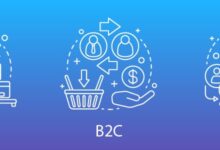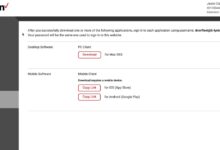B2B Prime: 7 Secrets to Unlock Explosive Growth
In today’s fast-paced digital marketplace, understanding the true power of B2B Prime can be the difference between stagnation and skyrocketing success. This comprehensive guide dives deep into what makes B2B Prime a game-changer for modern enterprises.
What Is B2B Prime and Why It Matters

The term B2B Prime has emerged as a pivotal concept in the world of business-to-business commerce, especially as digital transformation accelerates across industries. At its core, B2B Prime refers to a premium-tier service or platform model designed to enhance efficiency, speed, and value in B2B transactions. Unlike traditional B2B models, B2B Prime integrates advanced logistics, data analytics, and customer-centric features to deliver a seamless experience for corporate buyers.
Defining B2B Prime in Modern Commerce
B2B Prime is not just a branding term—it represents a strategic evolution in how businesses procure goods and services. It mirrors the success of consumer-focused models like Amazon Prime but is tailored specifically for enterprise needs. Key characteristics include faster delivery times, volume-based pricing, dedicated support, and integration with procurement systems.
- Emphasis on reliability and speed in supply chains
- Customized dashboards for procurement teams
- Priority access to inventory and new product launches
According to a McKinsey report, B2B e-commerce is projected to reach $20.9 trillion by 2027, with premium services like B2B Prime playing a central role in this growth.
How B2B Prime Differs from Traditional B2B Models
Traditional B2B transactions often involve lengthy procurement cycles, manual order processing, and inconsistent delivery timelines. B2B Prime disrupts this model by introducing automation, real-time tracking, and subscription-based benefits.
- Automated reordering and predictive inventory management
- Guaranteed 24–48 hour delivery windows
- Volume discounts with no hidden fees
“B2B Prime isn’t just about faster shipping—it’s about redefining the entire buyer journey for enterprise clients.” — Gartner Analyst, 2023
The Evolution of B2B Prime Platforms
The rise of B2B Prime is closely tied to the digitalization of supply chains and the increasing demand for Amazon-like experiences in the corporate world. Over the past decade, several key players have pioneered this shift, setting new standards for service excellence.
Early Adopters and Market Pioneers
Companies like Amazon Business, Alibaba.com, and Grainger were among the first to introduce Prime-style benefits to B2B customers. Amazon Business, launched in 2015, was a trailblazer by offering Prime-like shipping, business-only pricing, and tax-exempt purchasing.
- Amazon Business now serves over 35 million customers globally
- Alibaba’s 1688.com platform offers B2B Prime-like features in China
- Grainger’s Rapid Shipping program mirrors B2B Prime logistics
These platforms demonstrated that speed, transparency, and ease of use could be replicated in B2B environments, paving the way for broader adoption.
Technological Drivers Behind B2B Prime Growth
The scalability of B2B Prime models relies heavily on technological advancements. Cloud computing, AI-driven demand forecasting, and API integrations with ERP systems have enabled seamless B2B transactions.
- AI-powered chatbots handle 60% of customer inquiries on leading B2B Prime platforms
- Blockchain is being tested for secure, transparent B2B contract execution
- IoT sensors track shipments in real time, reducing delays
A study by IBM found that 78% of B2B companies investing in digital procurement tools reported improved supplier performance and reduced operational costs.
Key Features That Define B2B Prime
Not all B2B platforms that claim to offer “premium” services deliver on the full promise of B2B Prime. True B2B Prime models share a set of core features that distinguish them from standard offerings.
Accelerated Delivery and Logistics
One of the most defining aspects of B2B Prime is its commitment to fast, reliable delivery. This is achieved through a network of regional fulfillment centers, dedicated logistics partners, and dynamic routing algorithms.
- Same-day or next-day delivery for critical business supplies
- Real-time GPS tracking for high-value shipments
- Integration with third-party logistics (3PL) providers for scalability
For example, Amazon Business Prime offers free two-day shipping on millions of items, a feature that has significantly increased its adoption among mid-sized enterprises.
Volume Pricing and Subscription Benefits
B2B Prime platforms often bundle cost savings with subscription models. Businesses pay an annual or monthly fee to access exclusive pricing, bulk discounts, and member-only deals.
- Subscriptions can range from $199 to $1,000+ per year, depending on business size
- Members report average savings of 15–30% on recurring purchases
- Some platforms offer tiered memberships (e.g., Prime Basic, Prime Pro, Prime Enterprise)
“The ROI on a B2B Prime subscription becomes clear within the first three months for most of our clients.” — Supply Chain Consultant, Deloitte
B2B Prime and Customer Experience Transformation
Customer experience (CX) is no longer exclusive to B2C markets. In the B2B space, decision-makers expect intuitive interfaces, responsive support, and personalized service—hallmarks of B2B Prime platforms.
Personalization Through Data Analytics
B2B Prime leverages big data to deliver hyper-personalized experiences. By analyzing purchase history, industry trends, and user behavior, platforms can recommend relevant products, anticipate needs, and even suggest cost-saving alternatives.
- AI-driven product recommendations increase average order value by 25%
- Customized procurement dashboards improve decision-making speed
- Automated alerts for low inventory or price drops enhance efficiency
Platforms like SAP Customer Experience integrate these features into their B2B Prime offerings, enabling businesses to operate with greater agility.
Dedicated Account Management and Support
Unlike standard B2B vendors, B2B Prime providers often assign dedicated account managers to high-tier clients. These professionals act as strategic partners, helping businesses optimize spending, manage contracts, and resolve issues proactively.
- 24/7 access to technical and procurement support
- Quarterly business reviews to assess performance and ROI
- Onboarding specialists ensure smooth platform integration
This level of service fosters long-term loyalty and reduces churn rates significantly.
The Role of B2B Prime in Supply Chain Resilience
In an era marked by global disruptions—from pandemics to geopolitical tensions—supply chain resilience has become a top priority. B2B Prime platforms contribute to this resilience by offering redundancy, transparency, and agility.
Real-Time Inventory Visibility
One of the most powerful features of B2B Prime is real-time inventory tracking. Businesses can see stock levels across multiple warehouses, enabling better planning and reduced downtime.
- Integration with ERP systems like Oracle NetSuite and Microsoft Dynamics
- Automated low-stock alerts prevent production halts
- Multi-location inventory pooling increases availability
A Gartner study found that companies using real-time inventory tools reduced stockouts by 40% and improved order fulfillment accuracy by 35%.
Dynamic Supplier Networks
B2B Prime platforms often operate as marketplaces, connecting buyers with a network of pre-vetted suppliers. This diversification reduces dependency on single vendors and enhances negotiation power.
- Access to thousands of suppliers across categories (e.g., MRO, IT, office supplies)
- Supplier performance ratings ensure quality control
- AI matches buyers with optimal suppliers based on price, location, and reliability
This ecosystem approach makes B2B Prime not just a service, but a strategic advantage.
How to Implement B2B Prime in Your Organization
Adopting a B2B Prime model—either as a buyer or a seller—requires careful planning and alignment with business goals. The following steps can guide a successful implementation.
Assessing Your Business Needs
Before subscribing to a B2B Prime service, organizations must evaluate their procurement patterns, pain points, and digital maturity.
- Conduct a spend analysis to identify high-volume, recurring purchases
- Map out current procurement bottlenecks (e.g., approval delays, shipping issues)
- Engage stakeholders from finance, operations, and IT in the evaluation process
This assessment helps determine whether a B2B Prime solution is a strategic fit.
Choosing the Right B2B Prime Platform
Not all B2B Prime platforms are created equal. Factors to consider include industry specialization, geographic coverage, integration capabilities, and total cost of ownership.
- Amazon Business is ideal for general supplies and tech products
- Alibaba.com suits manufacturers sourcing raw materials
- Specialized platforms like Fastenal or Fisher Scientific cater to niche industries
It’s also crucial to review contract terms, data security policies, and customer support responsiveness before committing.
Future Trends Shaping B2B Prime
The B2B Prime landscape is evolving rapidly, driven by innovation and changing buyer expectations. Staying ahead of these trends is essential for long-term competitiveness.
AI and Predictive Procurement
Artificial intelligence is moving beyond recommendations to full predictive procurement. Future B2B Prime platforms will anticipate needs before they arise, automatically placing orders based on usage patterns.
- AI will forecast demand with 90%+ accuracy by 2026
- Smart contracts will auto-renew subscriptions based on usage
- Autonomous procurement agents will negotiate prices in real time
This shift will reduce human intervention and minimize waste.
Sustainability and Ethical Sourcing in B2B Prime
As corporate responsibility gains importance, B2B Prime platforms are incorporating sustainability metrics into their offerings.
- Carbon footprint tracking for every shipment
- Badges for eco-friendly suppliers and products
- Offset programs for emissions generated during delivery
A PwC survey revealed that 68% of B2B buyers prefer platforms that offer sustainable sourcing options.
Case Studies: Success Stories of B2B Prime Adoption
Real-world examples illustrate the tangible benefits of B2B Prime. Let’s examine how three companies leveraged these platforms to transform their operations.
TechStart Inc.: Streamlining IT Procurement
TechStart, a mid-sized SaaS company, struggled with delayed hardware deliveries and inconsistent pricing. After adopting Amazon Business Prime, they achieved:
- 45% reduction in procurement cycle time
- 22% cost savings on annual IT spend
- 99% on-time delivery rate for critical equipment
The integration with their internal procurement system allowed for automated approvals and budget tracking.
MediCare Labs: Ensuring Supply Continuity
MediCare Labs, a pharmaceutical research firm, faced frequent shortages of lab supplies. By switching to a specialized B2B Prime platform for scientific equipment, they gained:
- Real-time inventory alerts from multiple suppliers
- Priority access during global shortages
- Dedicated support for compliance and documentation
This ensured uninterrupted research timelines and improved audit readiness.
BuildRight Contractors: Scaling Material Procurement
BuildRight, a construction company with 15 active sites, used a fragmented supplier network. After implementing a B2B Prime solution for MRO (maintenance, repair, and operations) supplies, they reported:
- 30% reduction in material downtime
- Centralized billing and tax-exempt purchasing
- Mobile app access for on-site managers to place orders
The platform’s GPS-enabled delivery tracking minimized delays on job sites.
Challenges and Limitations of B2B Prime
Despite its advantages, B2B Prime is not without challenges. Organizations must be aware of potential pitfalls before adoption.
High Subscription Costs for Small Businesses
While large enterprises can absorb B2B Prime fees, smaller businesses may find the annual costs prohibitive. A $500+ subscription can represent a significant portion of their procurement budget.
- Some platforms offer scaled pricing based on revenue
- Alternatives include pay-per-use models or shared memberships
- ROI must be carefully calculated before commitment
Data Privacy and Security Concerns
B2B Prime platforms collect vast amounts of sensitive data, including purchase history, pricing agreements, and user behavior. This raises concerns about data breaches and misuse.
- Ensure platforms comply with GDPR, CCPA, and industry-specific regulations
- Review data ownership clauses in service agreements
- Use multi-factor authentication and encrypted connections
A Cisco report found that 60% of B2B data breaches originate from third-party vendors, highlighting the need for vigilance.
What is B2B Prime?
B2B Prime is a premium-tier service model in business-to-business commerce that offers accelerated delivery, volume pricing, dedicated support, and advanced digital tools to enhance procurement efficiency and customer experience.
How does B2B Prime benefit small businesses?
Small businesses can benefit from B2B Prime through faster access to supplies, cost savings via volume discounts, and improved operational efficiency. However, subscription costs must be weighed against potential ROI.
Is B2B Prime only for large enterprises?
No, B2B Prime is increasingly accessible to businesses of all sizes. Many platforms offer tiered pricing or scaled benefits to accommodate small and mid-sized companies.
Can B2B Prime improve supply chain resilience?
Yes, B2B Prime enhances supply chain resilience through real-time inventory visibility, diversified supplier networks, and predictive analytics, reducing the risk of disruptions.
What are the risks of adopting B2B Prime?
Risks include high subscription costs, data privacy concerns, and potential over-reliance on a single platform. Businesses should conduct due diligence and consider backup suppliers.
B2B Prime is reshaping the future of business procurement by combining speed, intelligence, and service into a single, powerful model.From tech startups to pharmaceutical labs, organizations across industries are leveraging B2B Prime to reduce costs, improve efficiency, and build resilient supply chains.While challenges like cost and data security remain, the benefits far outweigh the risks for most enterprises..
As AI, sustainability, and predictive analytics continue to evolve, B2B Prime will become not just an option, but a necessity for competitive businesses.The key to success lies in choosing the right platform, aligning it with strategic goals, and continuously measuring its impact.In the digital age, B2B Prime isn’t just a service—it’s a strategic advantage..
Further Reading:








